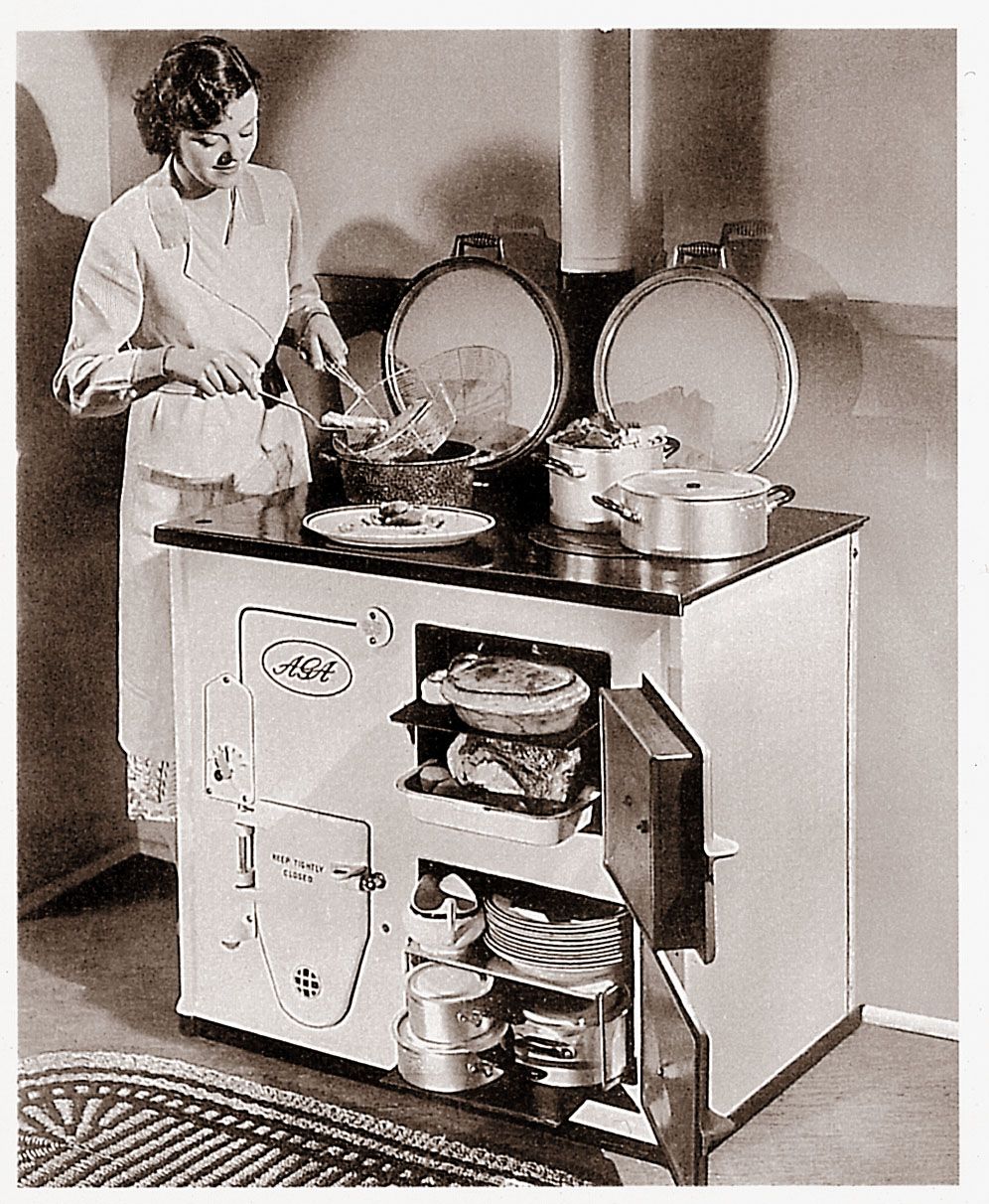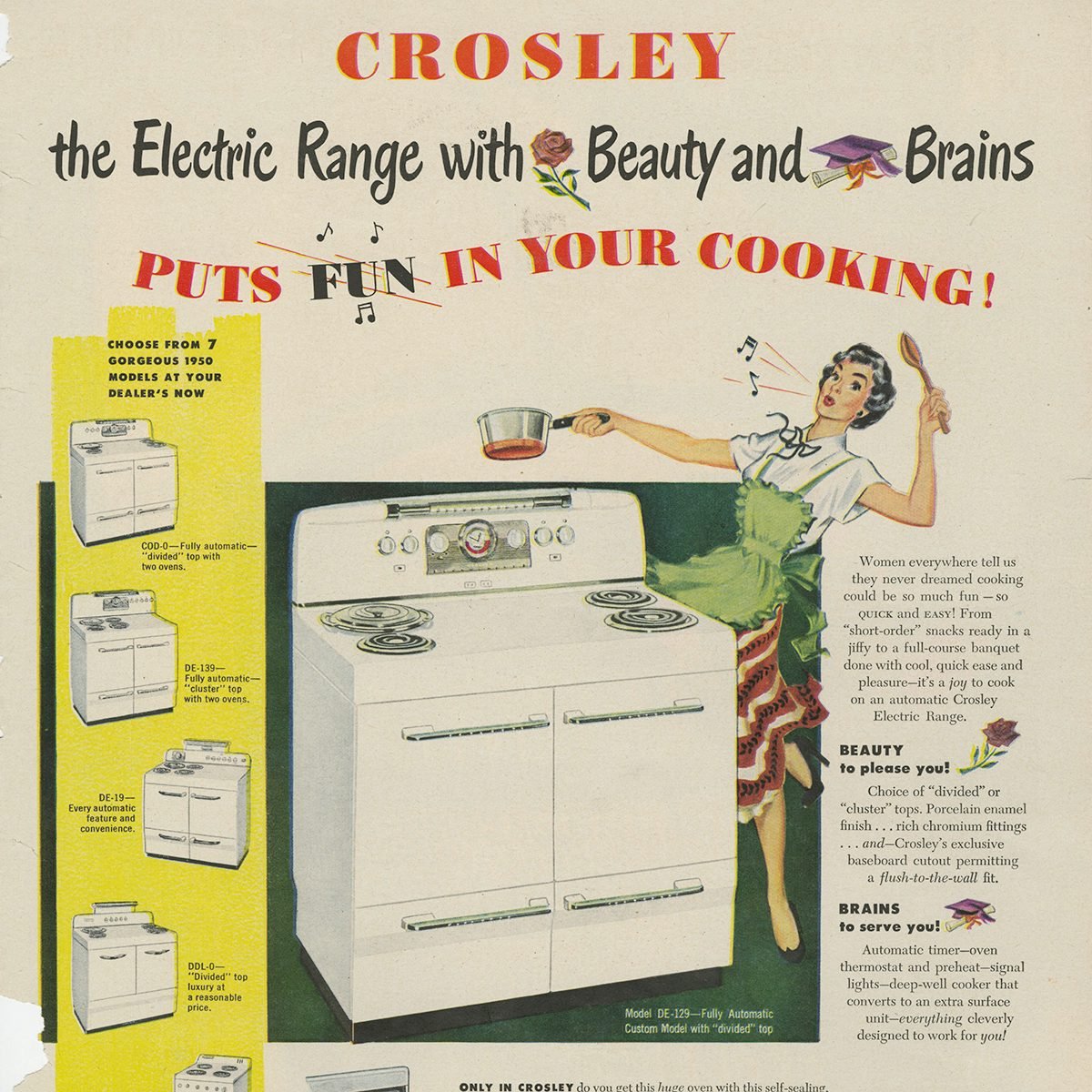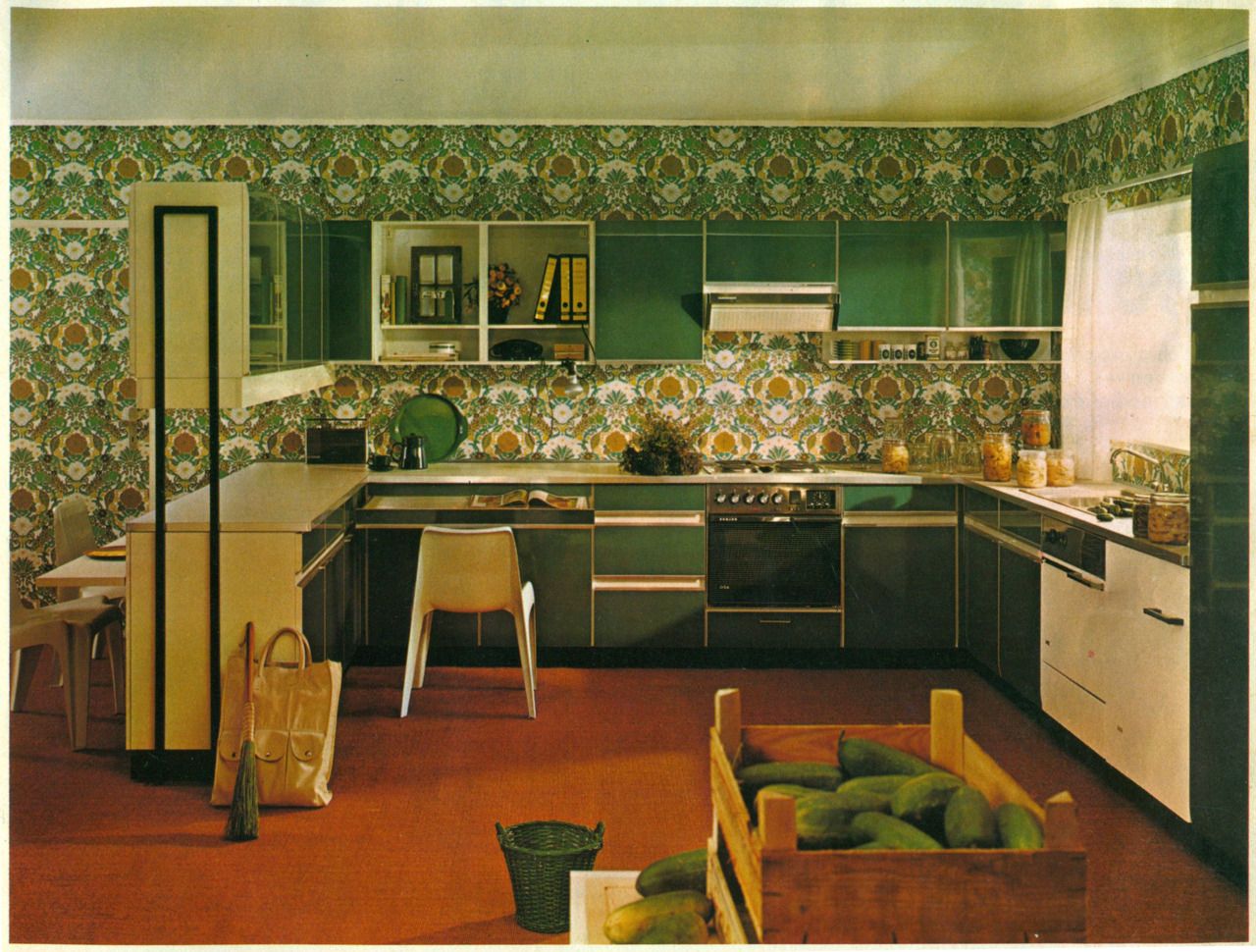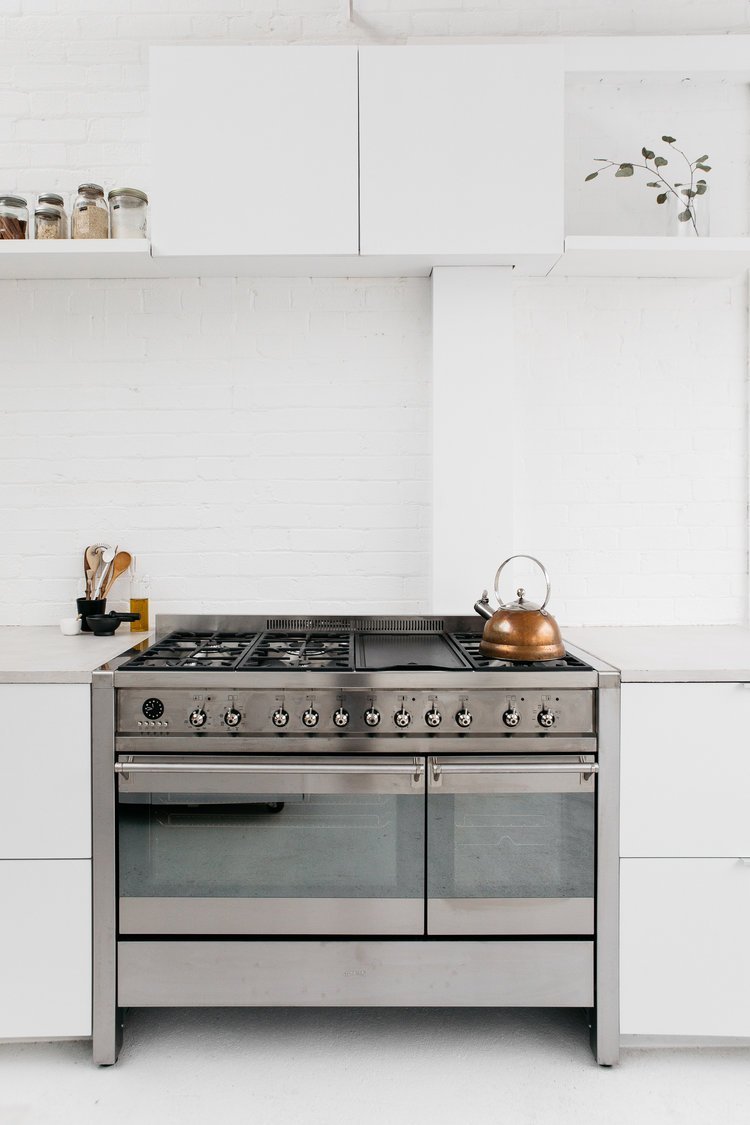Memorable Kitchen Design and Appliance Trends Over the Last Century
Over the course of the last century, the residential kitchen and large home appliances have seen many changes stylistically and functionally. While some have come and gone, others have developed over time to become a huge part of our everyday lives. Here is a historical rundown of some of the most memorable kitchen trends and appliances that people have loved (and hated) over the last 10 decades.
1920s This decade saw the rise of the AGA stove - a cast-iron oven that stayed hot continuously and was a quick hit. The AGA arrived in Britain and beyond in the late 1920s and rose further in popularity throughout the decades that followed. The gas cabinet range, a new type of stove, became popular also. This enameled cooking stove was big, bulky, yet extremely useful. For example, multiple burners enabled multi-tasking. The enamel finishes became trendy, which added more style options, as well as making wiping them down easier.

1930s Saving time was a consistent theme in the '30s. It was during this decade that the kitchen was increasingly becoming the arena of the housewife - rather than servants - as new electrical appliances helped to ease the workload. A number of electrical labour saving devices, such as toasters, kettles and vacuum-cleaners came onto the market during the 1930s. For those with a gas oven, the “Regulo” thermostat provided some relief, making sure that food cooked evenly without the need for constant monitoring.
Perhaps the biggest game-changer was the electric oven. It was faster, more economical and easier to wipe down. Also popular were self-cleaning designed kitchens; a type of design that utilized materials that were easy to clean and maintain, such as metal cabinets, stainless steel counters, and linoleum floors. Compact styles, streamlined gas stoves, compact cabinet units, and over-the-sink dish storage maximized space in smaller kitchens.
1940s
Appliances quickly became less bulky, more convenient, and easier to use as the 20th century progressed. Forty-five percent of Americans owned a refrigerator by the 1940s. They were mostly boxy and compact with little freezer compartments built in.
Clean lines and efficient designs continued into this decade also. In the U.K., the compact washing machine and wringer made its debut. The machine wasn't in a laundry room just yet, though. Its home was in the kitchen.
1950s
A lot of kitchen design and appliance innovations happened in the 1950s. Here are some of the most notable.
By the 1950s, almost every home in America had an electric refrigerator. As well as this, dishwashers were also increasingly commonplace in kitchens in the US and across the pond. This is when dishwashers became the machine that we know and love today - with racks and spinning sprays. In fact, rather than new engineering tech, the core design really hasn't changed much since then.
Easy-to-clean glass shelves, in-door compartments, and crisper drawers were a novel design in the '50s, and would become standard. But the refrigerator isn't the only in-demand appliance. In the postwar years, sales of home freezers went through the roof, making daily grocery shopping a relic of the past. The electric range, however small, was the hallmark of the high-tech kitchen of the period. The combo kitchen/dining area, the kitchen had become a stylish gathering area. Also back in the '50s, colors were as vivid as an Easter egg hunt, with bright hues of petal pink and turquoise blue.

1960s The emergence of earth tones in the mid-to-late '60s brings shades like "harvest gold" and "avocado green" into kitchens across North America. The '60s brought us avocado green and harvest gold, which managed to stay popular right through the '70s, along with copper brown and almond. The U-shaped kitchen was born during this decade. It is easy to see why this was popular: it gave a space the feeling of intimacy without being enclosed by walls. This design also provided a little extra space for cooking and storage, while still allowing natural light to come in.
Boundary-breaking design hit suburban and city kitchens alike, in the form of busy prints. Here, vinyl wallpaper unifies the refrigerator and backsplash while adding a trendy touch in a feature from a 1966 issue. Modesty and metal cabinets were out, and wood cabinetry, burnt orange, and shag rugs were in.
1970s Acid-hued formica laminate (the decade's most popular material) let homeowners get creative with their cabinets. Plain wood countertops created a cutting surface throughout the kitchen and gave a place for the eye to rest. Water and ice dispensers start to sit in the door of the super high-tech refrigerators, dazzling everyone with the novelty of getting a drink that wasn't from the sink.
With the 1970s came a wave of earthy tones. And there were plenty of people who were more than ready to ride that gravy train all the way into the kitchen. The 70s were all about wood - wood accents, wood trim, and wood cabinets. Color had always been a popular element in the kitchen, but' 70s kitchens were a rich blend of color and pattern, the like of which has never been seen before or since (touch wood).
Furthermore, golden and yellow tones, tile backsplashes, and avocado appliances were all the rage. Believe it or not, people dug this look back then. And it is possible that this is starting to make a comeback now!
In the '70s, women started to enter the workforce in droves due both to an economic need and to the women's lib movement. In correlation to this, appliances such as the Crock-Pot, which took on its modern design and its time-tested name in 1971, was marketed directly for this purpose - to modern women and their families. Indeed, the popularity of the handy slow cooker soared and sales had risen to $93 million by 1975.

1980s By now, the island had become a massive focal point of the kitchen; And since the 1980s were all about size - think big shoulder pads and big hair - the island was no exception. The 1980s island got huge. Even though this was partly due to the natural evolution of the kitchen as a social space, the other reason was likely pure ‘80s status symbol. Rather than closed-off spaces, kitchens became bigger. The move from a small kitchen, closed off from the rest of the home (with perhaps a small table and chairs for casual dining) to a large kitchen, open to the dining area and the living room, reflected a change in the role of the kitchen, and a change in lifestyle, perhaps.
Light colors, high ceilings, beams, and pale woods gave a soothing, homely look. Colorful appliances became a thing of the past, and in their place came sleek black or white or even the occasional almond choices. Pastels and bright hues are also a popular '80s trend that occasionally made its way into the kitchen. Here, the colors also signify the different "zones" for different functions. Kitchens in the 80s featured track lighting, brick flooring, and black appliances. Furthermore, neutral tones and modern wallpaper were quite popular. The '80s (and early '90s) brought us minimalist white, bisque and black.
1990s This decade said goodbye to the overly-flashy decor of the 80s. Oak cabinetry, sponge painting, and vinyl flooring was the sign of the times, at least for the better part of the 90s.
High-end homes were all about granite countertops. Color was decidedly more subdued in the '90s, with sage and hunter greens falling in between calm and bold color schemes. It was a neutral color that worked well with both black and stainless appliances. The "farmhouse look" was big: it was a little nostalgic, a little European - an eclectic style that incorporated marble, unusual thrift store finds, open shelving, white cabinets, and vintage ceramics.
Just like the convenience of the '50s lead to cooking becoming very much a hobby, the '90s experienced a shift towards gourmet kitchens. The main difference: The '90s gourmet kitchen took its cues from restaurants, with professional ranges and huge refrigerators, and at the end of this decade stainless steel appliances rose in popularity.
2000s Kitchens went from a little bit country to a bit more sleek, thanks to updated appliances and shiny new materials. Dark cherry cabinets and granite countertops took this decade by storm, along with tons of stainless steel. Indeed, this was the golden era of stainless steel. When the new millennium hit, with all its concerns about Y2K, global popular trends reflected the sense that we had stepped into the future. Alongside this, many designers sought to create efficient minimalist-inspired designs. Kitchens appeared to all but abandoned color, with the exception of beige. This timeless shade was a popular choice for cabinets, making open kitchens seem brighter yet more inviting. White cabinets, marble counters, and reclaimed wood floors don't need a filter to pop. Like the gourmet kitchens of the '90s, these elements were borrowed from trendy restaurants and translated into the home.
2010s The era of the smart kitchen technology had its genesis in 2014 when LG launched a new line of smart appliances equipped with HomeChat which enabled people to communicate with their appliances through the Line mobile messaging app.
LG's Internet-connected fridges allowed communication with the homeowner all day long via text messages. You could text them questions about what was in stock. The fridge used a camera to send a photo of its insides to its owner. Check out our blog on AI and Fridge Technology for an idea of what followed on from this. Smart appliances that emphasized ultimate efficiency (like the Whirlpool Gold Wall Ovens, which have a rapid preheat function) were also introduced in this decade.
Stylistically, 2014 also saw the emergence of darker cabinets. While some kitchens went smaller (it was the era of the tiny home movement), others went bigger with massive cooking ranges (and hoods to go with them). Other highlights of this decade included: subway tiles, open and airy spaces, farmhouse sinks, and all-white everything. White made a comeback and stainless steel continued to dominate.

2020s and Beyond As we head into this decade, there are more ways than ever to stay connected to your kitchen. 2020 will bring about a fresh new wave of tech-based trends, including a built-in vacuum sealer and the ability to control your stove top without ever needing to turn a knob. Indeed, with the current pandemic, kitchens and appliances in particular are likely to become more geared to automated, hands-free technology, with an extra focus on hygiene. For example, Beko, Europe's leading appliance manufacturer, recently unveiled a new home appliances line, launched via a virtual experience - that uses UV light technology heat and steam for at-home disinfection.
So far we have also seen the rise of black stainless steel. In fact, black stainless appliances have already made their way into 10% of upgraded kitchens. And it's easy to see why: With its soft, brushed metal finish, it is definitely a modern alternative to the traditional shiny stainless steel. This popular new finish is even said to resist fingerprints and smudges, and is designed to blend with other black and stainless appliances.
As more and more homeowners downsize and declutter, compact or multi-use appliances with capabilities of full-sized models are being produced. For example, the Whirlpool 2.8-cubic-foot Smart All-in-One Washer & Dryer washes and dries laundry in the same unit. And because it's ventless, it can fit into a range of spaces including closets and bathrooms for those with limited amounts of room. Table top dishwashers (such as the Bob Dishwasher and Xiaomi Mijia Table Dishwasher ) are growing in popularity, as are most compact appliances as we move further into this decade.
Did you know that buying local is a new trend for 2021? For 2021, it's all about supporting local businesses. How can you do that for a kitchen? You can consider purchasing small decorative accessories, but also support local by purchasing local produce. It is also possible to support local cabinet makers or local tile and stone companies. Buying locally is great for our economy and the product quality is typically much better than buying from elsewhere.
Are you in need of a new appliance? Whether you live in a cottage, an apartment, a mansion or a basement suite we have an appliance that will suit your needs. Our inventory changes weekly, so contact us today to find what you're looking for. We serve Burnaby, Coquitlam and the entire Lower Mainland.